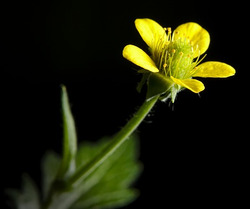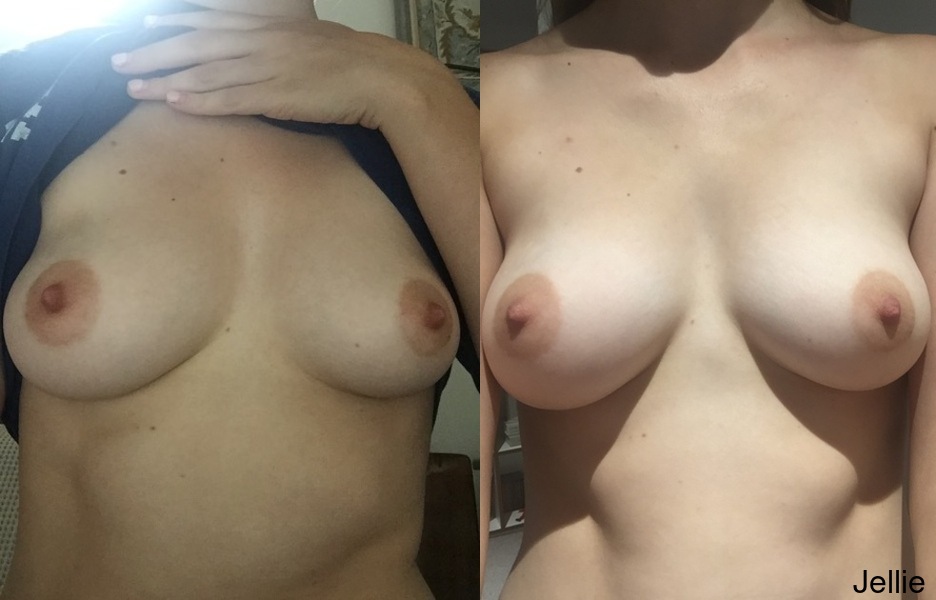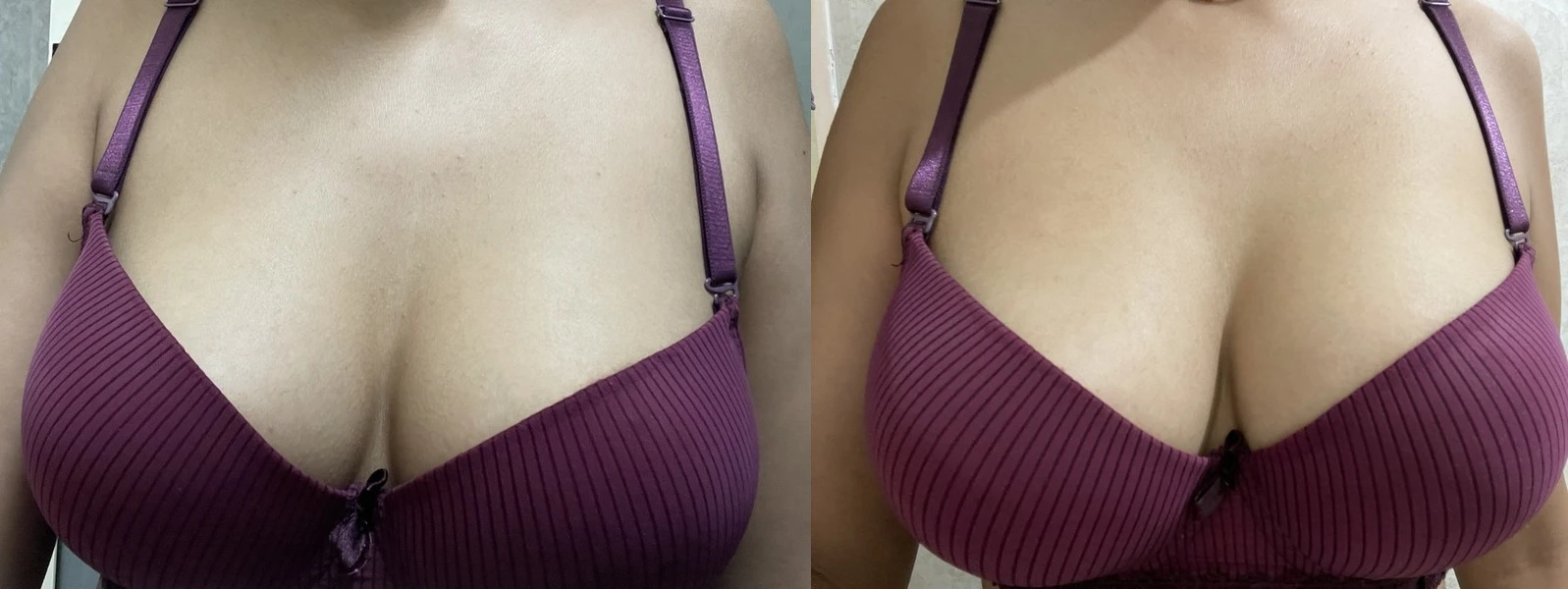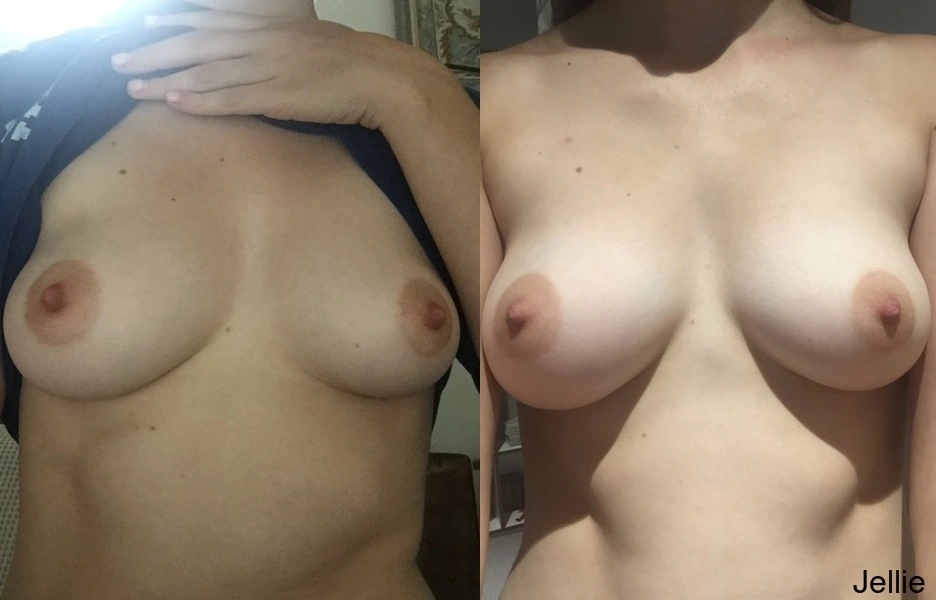Evening Primrose

This is about evening primrose, including its hormonal properties. Evening primrose is commonly used to treat hot-flashes.
Evening primrose is capable of lowering hot-flashes, but its use was substituted by other herbs and herb combinations to balance hormones, improve symptoms and/or increase breast size. For instance, sunflower seed improves estrogen response of the hips during certain symptoms of luteal and proliferative phases. The reason evening primrose was replaced was because it works by increasing Follicle Stimulating Hormone (FSH) production, which continued use could have uncertain negative effects on reproductive health. There are few herb programs with pictures that have caused improved hormone balance, hip growth and breast growth, without the use of evening primrose.

A few early programs did include limited use of evening primrose oil, but its use was replaced by sunflower seed. It was also only used for certain phases. In these early programs that used evening primrose, there was hip growth and a temporary improvement of symptoms. Overall, substitutions which have been a part of the simplified program and its predecessor programs are recommended for everyone for hormone balance. Programs with pictures which there was improved hormone balance or a cupsize or more in breast growth without evening primrose are: Anon08, Jellie and Pumpkin Angel. Jellie's program has used evening primrose oil before for breast growth, but it was used sparingly then and only outside of menses. Her program was adjusted for more sustainable replacements of herbs. There's more programs with improved hormonal balance, of those with hirsutism at hirsutism-topic, but these don't have pictures. hirsutism01 and most other hirsutism programs had an improvement in hormone balance. The program of hirsutism01 had used evening primrose, but her hormone balance was later improved without it. Of these programs, hirsutism03 didn't have an improved hormone balance, however, the herb schedule has been improved more since than, and is expected to help there. For the starting point on improving hormone balance, increasing hip size or breast size, see the guide.
Evening primrose is not recommended for those under 45 years of age, because use of evening primrose causes the release of Follicle Stimulating Hormone (FSH) which may not be sustainable for reproductive health. For programs, I attempted to look ahead of the curve, simply by the effects of FSH, to reduce or minimize any potential negative effects. When evening primrose was suggested then, its use was limited to once per phase and only during certain symptoms. Its use was even minimized. This herb profile will remain here, for reference, and for those over 45 who want to alleviate unwanted symptoms. There's a herb program for those over 45 who want to improve hormone balance.
Etymology
The genus of evening primrose goes by the scientific name of Oenothera. Evening primrose belongs to the Onagraceae family.
The genus Primula of the Primulaceae family is also known as Primrose. This page and website describe Oenothera, which has different properties than Primula. Primrose is the proper term for Primula.
Properties
Evening primrose contains gamolenic acid (gamma-linolenic acid) an omega-6 fatty acid, which is a precursor to prostaglandin E1 (PGE1 or alprostadil), which is a precursor to follicle stimulating hormone (FSH).
Anecdotal Evidence
The effects of evening primrose on breasts depend on present body hormone levels. Oenothera has the ability to increase or decrease estrogenic symptoms. It is notable that no matter when evening primrose is taken, it doesn't increase androgenic symptoms such as alcopecia or hirsutism.
When evening primrose is taken during the begining of proliferative phase, it raises temperature and has the ability to cause hot-flashes, but after a while, temperature levels seem to lower, sometimes below the previous temperature. Primrose contains the precursor to FSH, and it likely causes an increase of this hormone. Use of evening primrose is likely unsustainable for fertility, as it seems to rely on estrogen from ovarian follicle release.
Use
Oenothera for breast enhancement
Evening primrose has caused breast enlargement, but it is not recommended for those under 45 years old. Continued and excessive use is likely not sustainable for reproductive health. Evening primrose shouldn't be used in any amount for those with a past hormone imbalance.
Oenothera, when used alone and not during the ideal phase of the menstrual cycle, likely treats a symptom temporarily. When used with the right herbal combination and during the right time of the cycle, evening primrose probably has potential to increase overall estrogen response. Especially, avoid evening primrose during menstruation and premenstrual phases.
If it were to be used, evening primrose would be limited to once for mid-secretory phase (after mucus picks up). Oenothera required sunflower, primarily phytoprogestin herbs and minimal spearmint to cause bust growth. Evening primrose could cause bust enhancement other times, but that use would be unsustainable for health. Also, if Evening primrose were to be used, amounts should be limited. Use a drop of evening primrose per serving with a teaspoon of olive oil and 8 sunflower seed. Unfortunately most supplements come in high amounts. If you have the capsule form, dilute one capsule in olive oil for extended use.
Programs Anon02 and Anon03 had results from evening primrose use, however this herb is no longer recommended.
Oenothera or herbs with similar properties are in herb programs based on menstrual phases. There must be balance throughout phases, and combinations of herbs help the body acheive balance for health, breast growth and hip growth. It's important that menses is light and short. Also, preventing an excess of negative symptoms for menses helps set the balance for proliferative phase. Luteal phase uses a different combination of herbs than proliferative phase for symptoms. For a simplified herb schedule, where there's commonality of herb recommendations for symptoms such as swelling and signs of excess estrogen, use nonmenses. BCP01 is a composite page of pieces of different programs on birth control or IUD use.
Herb timing and combinations' success for breast enhancement relies on menstrual phases. Descriptions and pictures of results from herb combination use can be seen in programs. For more guidance, see guide, or hirsutism-topic.
For hormone balance
Evening primrose has a reputation for relieving hot-flashes. This unfavorable symptom is due to estrogen receptor desensitization. This can be used for those over 45 years of age.
Precautions
See precautions for more details of care to be taken with herb use. Proper nutrition is a consideration for health. Also, check for the latest blog updates about herb and hormone safety.
It is very important that menses be light and not prolonged.
If you have hirsutism, PCOS, hot-flashes, other signs of hormone imbalances, see estrogen-imbalance, and hirsutism program journals at hirusitism-topic before trying herbs.
Herb concentrates can be tens of times more potent by weight than herbs in solid form. This can easily lead to hormone imbalances. For this reason, concentrate extracts are not recommended for extended or excessive internal use, especially during fertility years. Concentrates shouldn't be used to overcome plateaus. Another issue with herbal extracts, is that they may not have the full range of properties of the herb. Essential oils are not recommended for breast enhancement. If opting to use herbal extracts, use food grade extracts, with no more than 1 drop at a time diluted in water.
More


For the latest herb programs and how to get started, see: guide. Pictures of breast enhancement can be seen in the program journals of Anon02, Anon08, Anon09, Bubblemelon and Jellie.
For resources on hips and butt enhancement, see: /appendix/hips-butt-enhancement and /appendix/kettlebell.
breast-endocrinology.pdf describes the science of breast development and endocrinology. It also describes symptoms related to hormone imbalances. Biology and hormone imbalances are excerpts from this ebook. breast-endocrinology.pdf uses a Creative Commons (CC BY-ND 4.0) license.
Breast.is blog
References:
- A review of effective herbal medicines in controlling menopausal symptoms. https://www.ncbi.nlm.nih.gov/pmc/articles/PMC5783135/.
- Effect of oral gamolenic acid from evening primrose oil on menopausal flushing.. https://www.ncbi.nlm.nih.gov/pmc/articles/PMC2542782/.
- MESH: gamma-Linolenic Acid. https://www.ncbi.nlm.nih.gov/mesh/?term=gamolenic+acid.
Etymology & Definitions:
- USDA Classification: Oenothera. https://plants.usda.gov/java/ClassificationServlet?source=display&classid=OENOT.
- U.S. National Plant Germplasm System: Oenothera. https://npgsweb.ars-grin.gov/gringlobal/taxonomygenus.aspx?id=8398.
- USDA Classification: Primula. https://plants.usda.gov/core/profile?symbol=PRIMU.
- U.S. National Plant Germplasm System: Primula. https://npgsweb.ars-grin.gov/gringlobal/taxonomygenus.aspx?id=9834.
- MESH: Alprostadil. https://www.ncbi.nlm.nih.gov/mesh/68000527.
- MESH: Gamma-Linolenic Acid. https://www.ncbi.nlm.nih.gov/mesh/?term=gamolenic+acid.
Resources:
- NIH: Evening Primrose Oil . https://nccih.nih.gov/health/eveningprimrose.
- A comparative study on the effect of “black cohosh” and “evening primrose oil” on menopausal hot flashes. https://www.ncbi.nlm.nih.gov/pmc/articles/PMC5868221/.
- Alternative treatments for menopausal symptoms. Systematic review of scientific and lay literature.. https://www.ncbi.nlm.nih.gov/pmc/articles/PMC2278276/.
